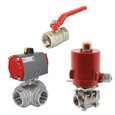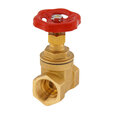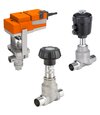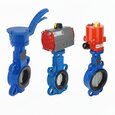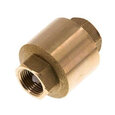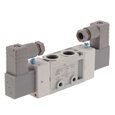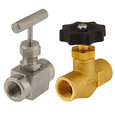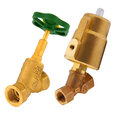How To Tell If a Valve Is Open Or Closed
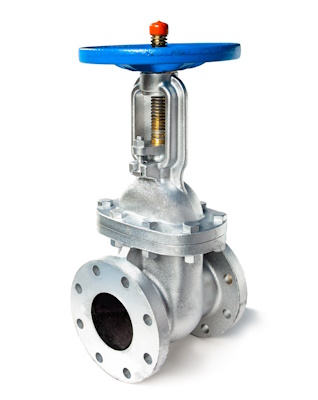
Figure 1: Rising stem gate valve
Determining whether a valve is open or closed is crucial for ensuring operational efficiency and safety in fluid control systems. While butterfly and ball valves provide clear visual indicators through handle orientation, globe and gate valves present challenges due to their lack of obvious cues. This article examines the primary valve types and provides detailed guidance on identifying their operational status.
Table of contents
- Ball valves
- Gate valves and globe valves
- Butterfly valves
- Actuated valves
- Check valves and pressure reducing valves
- FAQs
Ball valves
View our online selection of ball valves!
Understanding if a valve is open or closed is straightforward with ball valves.
- Closed position: The handle is oriented perpendicular to the pipe, indicating that the valve is obstructing flow.
- Open position: The handle is aligned parallel to the pipe, signifying that the valve permits flow.
This configuration applies universally to all ball valves. When the valve is open, the handle should align with the flow direction, providing a visual indication of which side of the valve retains fluid post closure.
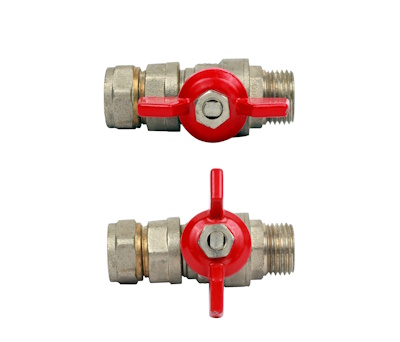
Figure 2: Ball valve in the open (top) and closed (bottom) positions
Gate valves and globe valves
View our online selection of gate valves and globe valves!
Valves equipped with handwheels, such as gate and globe valves, require careful handling. To close these valves, rotate the handwheel clockwise (to the right). To open them, rotate the handwheel counter-clockwise (to the left). The handwheel will cease to turn once the valve is fully open or closed. It's important to remember to stop turning the knob when you encounter resistance; forcing it further could damage the gate and make the valve ineffective. Also, some valves may operate in the reverse direction; therefore, it is advisable to consult any directional indicators present on the valve.
- Rising stem valves: Rising stem valves (Figure 1) have the threaded portion of the stem outside the valve body, protecting it from corrosion and wear. It provides a clear visual indication of the valve's position, whether open or closed. When the valve is open, the stem will be extended outward from the valve body. Conversely, when the valve is closed, the stem will be retracted into the valve body.
- Non-rising stem valves: For valves with non-rising stems, it is not possible to estimate the valve position visually. In such cases, gently attempt to turn the handwheel. If it turns clockwise (to the right) and then stops, the valve is likely closed. If it turns counter-clockwise (to the left) and then stops, the valve is likely open. The handwheel will stop turning when the valve reaches its fully open or fully closed position, indicating the valve's status. Another method is to examine the flow rate: an open valve results in a steady water flow, while a closed valve stops the flow.
Butterfly valves
View our online selection of butterfly valves!
Butterfly valves function similarly to ball valves:
- Closed position: The handle is perpendicular to the pipe.
- Open position: The handle is parallel to the pipe.
Butterfly valves often incorporate a latching mechanism, allowing the handle to be positioned between fully open and closed states to regulate flow. The handle should point in the direction of flow when the valve is open.
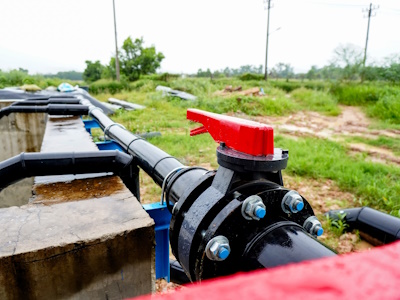
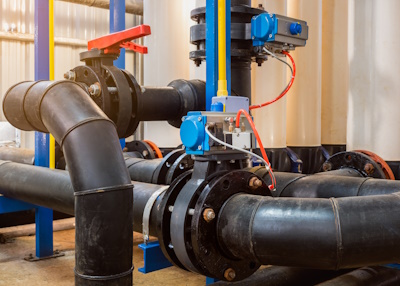
Figure 3: An open (left) and closed (right) butterfly valve
Actuated valves
View our online selection of actuated valves!
An actuated valve is operated using an external power source, such as an electric motor, pneumatic pressure, or hydraulic fluid, to control the flow of a fluid. The actuator converts the control signal into mechanical motion to open, close, or modulate the valve position. Actuated valves are commonly used in automated process control systems where precise and reliable control is required.
To determine if an actuated valve is open or closed, consider the following methods:
- Position indicators: Visual indicators, either mechanical or electronic, show the valve's position.
- Limit switches: Limit switches send an electrical signal when the valve is fully open or closed.
- Position sensors: Devices like potentiometers or encoders provide continuous position feedback.
- Control system feedback: Automated systems use command signals and sensor feedback to infer valve position.
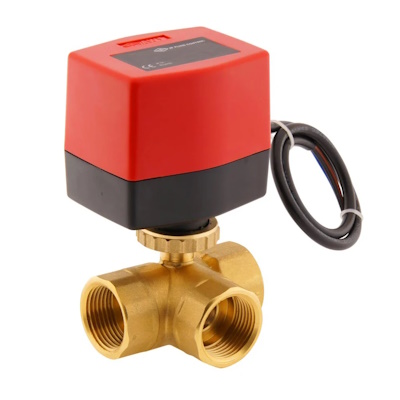
Figure 4: 3-way electric ball valve
Check valves and pressure reducing valves
View our online selection of check valves and relief valves!
Check valves and PRVs operate differently from manually controlled valves:
- Check valves:Check valves permit flow in one direction and prevent backflow. They are always "on" in the intended flow direction. Check valves are fluid-operated; unlike manually operated valves such as gate or ball valves, the status of a check valve automatically responds to the conditions within the pipeline.
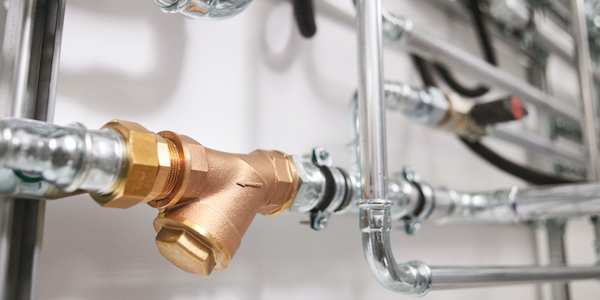
Figure 5: Y-check valve
- Pressure reducing valves: A pressure reducing valve lowers the input pressure of a fluid to a desired lower output pressure. It usually has an adjustment knob to set the system pressure. To check if the valve is open or closed, use pressure gauges before and after the valve. Compare the inlet and outlet pressures to see if the valve is maintaining the desired lower pressure on the downstream side. If the downstream pressure is as expected, the valve is open and working properly. If not, it may be closed or malfunctioning.
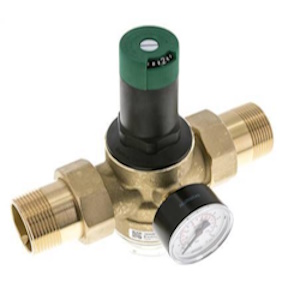
Figure 6: Water pressure regulator with a built-in strainer and pressure gauge
-
Pressure relief valves: Pressure relief valves remain closed until system pressure exceeds a predetermined threshold, at which point they open to relieve excess pressure. Determining if a pressure relief valve has opened can be challenging, but several indicators can help:
- Check for discharge marks on the outlet, which can indicate that the valve has opened.
- Analyze pressure trends from system data. If the pressure reached the setpoint and later tests confirm the valve's functionality, it likely opened.
- Operators may hear the valve lift during an overpressure event.
- Some relief valves have devices that indicate if the valve has been lifted.
- If the valve is removed and tested, and it pops correctly but shows signs of leakage or improper reseating, it may have been lifted.
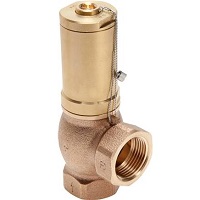
Figure 6: Relief valve
FAQs
When is a manual valve open or closed?
A valve is open when it allows flow, usually with the handle parallel to the pipe. It is closed when it blocks flow, often with the handle perpendicular to the pipe.
How do you tell if a valve is stuck open?
A valve may be stuck open if fluid flows continuously despite the handle indicating it's closed. Confirm by checking for unexpected flow or pressure downstream.




